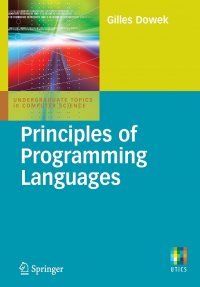We've known about algorithms for millennia, but we've only been writing c- puter programs for a few decades. A big di?erence between the Euclidean or Eratosthenes age and ours is that since the middle of the twentieth century, we express the algorithms we conceive using formal languages: programming languages. Computer scientists are not the only ones who use formal languages. - tometrists, for example, prescribe eyeglasses using very technical expressions, ? ? such as "OD: -1.25 (-0.50) 180 OS: -1.00 (-0.25) 180 ", in which the parent- ses are essential. Many such formal languages have been created throughout history: musical notation, algebraic notation, etc. In particular, such languages have long been used to control machines, such as looms and cathedral chimes. However, until the appearance of programming languages, those languages were only of limited importance: they were restricted to specialised ?elds with only a few specialists and written texts of those languages remained relatively scarce. This situation has changed with the appearance of programming l- guages, which have a wider range of applications than the prescription of e- glassesorthecontrolofaloom,areusedbylargecommunities,andhaveallowed the creation of programs of many hundreds of thousands of lines. Это и многое другое вы найдете в книге Principles of Programming Languages (Gilles Dowek)
Principles of Programming Languages Gilles Dowek
Подробная информация о книге «Principles of Programming Languages Gilles Dowek». Сайт не предоставляет возможности читать онлайн или скачать бесплатно книгу «Principles of Programming Languages Gilles Dowek»
